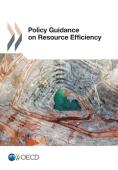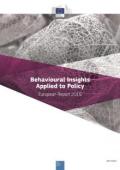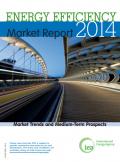
Taking into account bilateral political and economic relations, the authors analyze the role of institutional distance and host country attractiveness in location determinants of Chinese Foreign investments in EU in the renewable energy sector. Findings show that Chinese firms tend to invest in EU countries with reduced rule of law; market affluence is an attraction factor for them, but they do not seem to be human capital asset-seekers. Countries with politically stable environment are most attractive to sales/services subsidiaries; while countries with good control of corruption, low trade barriers and encouraging foreign ownership are most attractive to manufacturing subsidiaries. A large market is the most attractive factor for R&D subsidiaries, and a rich market is the most attractive factor for manufacturing subsidiaries. Manufacturing subsidiaries are more technological asset-seekers. R&D subsidiaries are the most non-human capital asset-seekers.

This report responds to the request by G7 Leaders at the Schloss Elmau Summit in June 2015, for the OECD to develop policy guidance on resource efficiency. Establishing a resource efficient economy is a major environmental, development and macroeconomic challenge today. Improving resource efficiency by putting in place policies that implement the principles of reduce, reuse, recycle (the 3Rs) is crucial to improving resource use, security and competitiveness while diminishing the associated environmental impacts.

This report covers a wealth of policy applications either implicitly or explicitly informed by behavioural insights (BIs). It reviews institutional developments and puts forward a comparative framework (PRECIS) describing behavioural insight teams with six key features. The Report reaches four main conclusions: i) in terms of capacity-building, there is significant dynamism and growing appetite to apply BIs to policy-making; ii) links between policy-making and academy communities can be strengthened and analysing large datasets offers great potential; iii) systematic application of BIs throughout the policy cycle can advance evidence-based policy-making; iv) need of more research on the long-term impacts of policy interventions.

Keeping global warming below 2°C will require substantial reductions in global greenhouse gas emissions over the next few decades.
This report highlights that leaving the transition to a low-carbon economy too late risks affecting the economy of the European Union in three ways:
- first, a sudden transition away from fossil-fuel energy could harm GDP, as alternative sources of energy would be restricted in supply and more expensive at the margin;
- second, there could be a sudden repricing of carbon-intensive assets, which are financed in large part by debt;
- third, there could be a concomitant rise in the incidence of natural catastrophes related to climate change, raising general insurers’ and reinsurers’ liabilities.
A gradual transition to a low-carbon economy is therefore seen as the best option; this choice would be better manageable and would prevent energy costs from rising abruptly. Furthermore, additional policy intervention and investments in low-carbon technology are likely to help in preventing greenhouse gases in the atmosphere from growing in the medium term.

This year’s report includes an in-depth look at energy efficiency developments in the transport sector and in finance. Huge new waves of demand for mobility are emerging in OECD non‑member economies, bringing with them the challenges of pollution and congestion already faced in OECD countries. Fuel-economy standards and other policies are expected to help shape the market for more energy-efficient vehicles in the years to come. In financial markets, energy efficiency is becoming an important segment in its own right, aided by a growing range of financial products. This report documents the growing scale and diversity of energy efficiency products and actors.
Finally, this report reviews national energy efficiency market developments in various jurisdictions around the world, including Canada, China, the European Union, India and Italy. These case studies provide snapshots of specific energy efficiency sub-markets, and insights into how these markets may evolve in the coming years.
